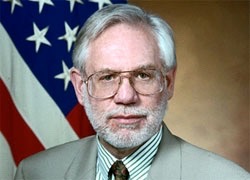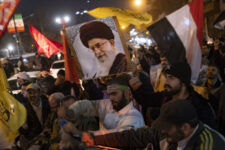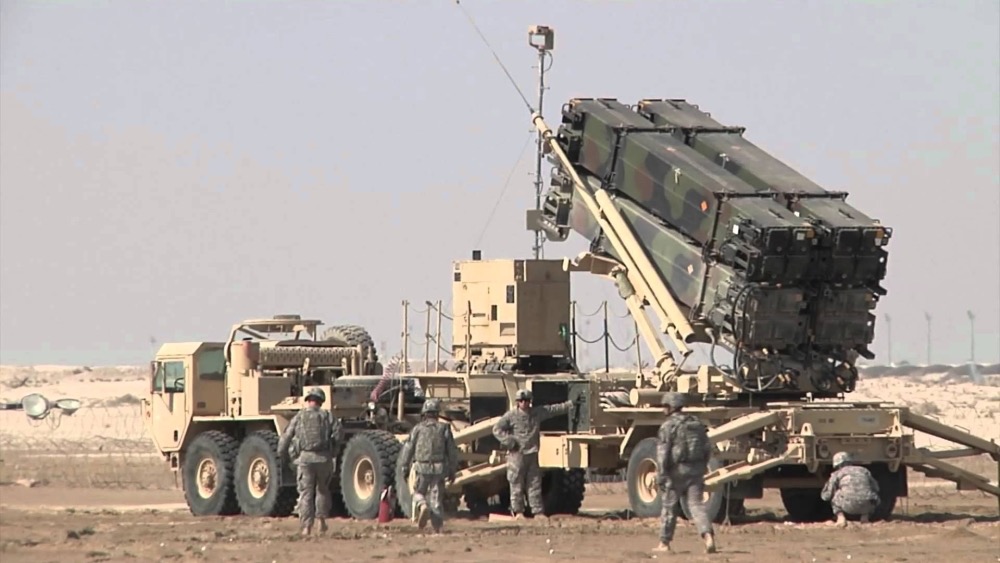Phil Coyle knows missile defense. He was director of Operational Test and Evaluation from 1994 through January 2001, during the darkest days of THAAD and when missile defense was a religious issue for both Republicans and Democrats. Thank goodness we had Coyle around to actually bring facts to the roiling debate then. Does Coyle think this will lead to real improvements in our current approach? Will it all get swept under the rug? Read on. The Editor.
 Sometimes it takes real candor at the highest levels to bring about needed change. A good example is the November 5, 2014 memo by Army Chief of Staff Raymond Odierno, and Navy Chief of Naval Operations Jonathan Greenert on the need for a new approach to U.S. missile defenses. That memo to then Defense Secretary Chuck Hagel is back in the news now that the SecDef’s February 4 reply has become public. (Hats off to colleague Andrea Shalal for breaking this story: “Pentagon plans hard look at missile defense programs. The Editor.)
Sometimes it takes real candor at the highest levels to bring about needed change. A good example is the November 5, 2014 memo by Army Chief of Staff Raymond Odierno, and Navy Chief of Naval Operations Jonathan Greenert on the need for a new approach to U.S. missile defenses. That memo to then Defense Secretary Chuck Hagel is back in the news now that the SecDef’s February 4 reply has become public. (Hats off to colleague Andrea Shalal for breaking this story: “Pentagon plans hard look at missile defense programs. The Editor.)
Now the question is, will the Pentagon bureaucracy blunt the value of this important candor by arguing that the current approach is sound and only needs tweaking?
“Our present strategy is unsustainable in the current environment and favors forward deployment of assets in lieu of deterrence-based options to meet contingency demands,” Greenert and Odierno wrote. Not pulling any punches, they explained that modern threats, “… continue to outpace our active defense systems and exceed our Services’ capability to meet Combatant Commanders’ demand.”
The U.S. military wants to address these needs, and a recent Army briefing explains some of the problems that have been encountered in battle, military exercises and missile defense tests.
One persistent problem area has been an “Ambiguous Air Picture” that is, “lack of a single integrated air picture” which in turn leads to an “unacceptable level of confidence in classification, identification and discrimination of aerial objects,” and “lower level soldiers making critical decisions without adequate information.”
The result, the briefing explains, can be fratricide, as has been seen both in battle with Patriot and in simulation exercises where mock enemy forces confront friendly forces.
Other cited problems are a “lack of flexibility in employing assets” resulting in “overdeployed forces,” an unacceptable logistics burden, and the inability to “defend critical assets and maneuvering force against [the] full range of aerial threats.”
This briefing makes clear the daunting complexity of U.S. missile defenses, and the failures that cause our missile defenses to not only miss their targets, but also to confound nearby U.S. military operations.
One of the culprits identified is an “antiquated architecture” which can cause U.S. missile defense systems to simply miss their targets. Another culprit is stovepipes, what the briefing calls “Mission Command Stovepipes,” where there is little coordination by the Missile Defense Agency, and the various stove-piped elements don’t talk to each other.
The basic architecture of U.S. missile defense systems is in doubt because of elements that are not effective, do not exist, or are not achievable for the foreseeable future. Clearly, a major review and reconsideration of America’s missile defense systems is warranted. In particular, without a scientifically credible path to effective target discrimination, these projects lack the necessary foundation for success.
Add such technical problems to the cost of sustaining missile defenses as currently being fielded, and our top military leaders are correct to tell it like it is.
Will the Pentagon brush all this under the rug? So far it sounds like it. Secretary Hagel’s reply has that unmistakable bureaucratic ring. Calling for yet another set of joint capability reviews in the context of the 2017 budget, Hagel seems to miss the point Greenert and Odierno made, saying, “ … our current national BMD policy is sound …” Then Hagel concludes, “I look forward to your participation in these ongoing and upcoming reviews to ensure your equities are given adequate consideration.”
Let’s hope the Pentagon does better than that. Real candor from our top military leaders should be met with more than, “Thank you for your interest in our national defense.”
Philip E. Coyle, senior science fellow at the non-partisan Center for Arms Control and Non-Proliferation, served as associate director for national security and international affairs in the White House Office of Science and Technology Policy during 2010 and 2011 and he holds the record as the longest-serving director of Operational Test and Evaluation at the Pentagon.
To read the Army briefing Coyle mentions above, click the following link.
Multi-ship amphib buy could net $900M in savings, say Navy, Marine Corps officials
Lawmakers gave the Navy authorities to ink a multi-ship amphib deal years ago, but the service has not utilized that power yet.




























